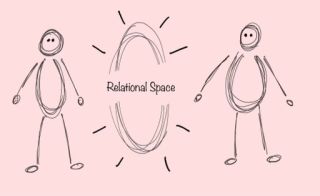Gender
What to Do if You’re Doing Too Much
Ideas to address household inequality without professional help.
Posted February 20, 2023 Reviewed by Davia Sills
Key points
- The concept of "cognitive labor" is critical to an equal partnership.
- It's important for partners to understand and acknowledge how equality is better for everyone, not just women.
- Addressing your "relational space" can help unearth the gender norms that underpin your household behaviors.
"I am the one at home who does all the things. My partner doesn't understand how much work I do to manage the household, nor do they understand that—between home and work—I am stretched and stressed all the time. I've asked for help. I've tried to explain. Sometimes things get better for a day or two. But nothing lasts. Now I am frustrated, resentful, exhausted—and my relationship is in trouble. I am at my breaking point. What do I do?"
My book, Equal Partners: Improving Gender Equality at Home, came out in June 2022. Like any new author, I dove into book promotion—speaking to every podcaster, book group, and journalist interested in my research. And, without a doubt, "What do I do?" was the question I heard most frequently.
The material in Equal Partners covers many issues relating to this question. There is a chapter about how gender inequality is bad for all of us, highlighting the benefits to men who embrace equality in the home. There is a chapter about how we accidentally perpetuate gender inequality, a chapter about what an equal partner looks like, and another about how we can raise boys to be more comfortable with household equality. But there is not one standalone chapter that directly addresses this question that I am asked over and over.
Based on the frequency and urgency of this question, this is clearly where many people are right now. And I want to do my best to find a meaningful and satisfying answer.
I reached out to Jessica DeGroot, founder and Executive Director of ThirdPath Institute, a non-profit organization devoted to helping couples achieve balance in their relationship. After mulling this question over and addressing it from a variety of angles, DeGroot and I came to a conclusion. There are essentially two ways one can go about trying to alter their troubled relationship: One can seek out professional help, or one can try to do it without professional help. Both are difficult, and both can work. And the more information a person has upfront, the better prepared they are to make an informed decision about what might work for them.
This first article will address how one might go about solving this popular question without seeking out professional help. Perhaps you do not have the resources required for therapy, or maybe you or your partner are simply not comfortable working with a professional. Whatever the reason, there are some approaches that you can try on your own that might help initiate a change.
The second half of this series offers information for those interested in reaching out to a couples therapist.
Along with DeGroot, I spoke to two more Psychology Today experts to help me articulate an answer to this difficult question: Dr. Michael Mangino, a practicing Licensed Clinical Psychologist, and Rachel Allender, a Clinical Social Worker. Both specialize in gender-diverse couples' therapy and have extensive experience working with same-sex, different-sex, and queer couples. Though many of our gender norms are rooted in traditional heteronormative patterns, they manifest in all types of marriages.
1. Understanding Cognitive Labor
Over the years, people have used a variety of phrases to capture the idea of emotional labor or the non-tangible work required to run a home: the thinking, the planning, the anticipating, the managing. I prefer to use Dr. Allison Daminger's term "cognitive labor." Anyone who has done project management work will understand what this is.
Household work is not just about cooking dinner—it is meal planning, accommodating everyone's preferences and schedules. Household work is not just about picking up and dropping off at school—it is planning the family calendar months to ensure you have childcare for planned days off as well as unexpected sick days. Cognitive labor is particularly exhausting because it is never done. Cognitive labor follows you through the weekend, on vacations, and only intensifies during holidays.
Daminger studied different-sex couples claiming to value gender equality and found that cognitive labor was not distributed evenly between male and female partners. She reported that, on average, the women in her study did far more cognitive labor than their male partners.
But again, these behaviors are simply roles. They are not attached to our gender identities. In some different-sex couples, the roles are flipped, and the male is the cognitive laborer, with a female partner doing less. DeGroot, Mangino, and Allender all agree that same-sex and queer relationships regularly display the same pattern: One person does more, and one person does less.
Whatever the gender identity, I find that this lopsided division of cognitive labor can have negative ramifications for both partners. It can prevent the one doing more from achieving professional and income-earning goals, and it can prevent the one doing less from achieving emotional goals. And it can prevent both partners from maintaining emotional wellness.
I would argue that it is nearly impossible to have an equitable relationship when two people are not sharing in the cognitive labor of their home. Therefore, an important step to recalibrating the balance in your relationship may be to take a close look at the cognitive processes necessary to make your house run and find a way to ensure both of you take on about 50 percent of that work.
2. Equity Is Better for Everyone
When initiating the conversation with your partner, start from a place that assumes that inequity is bad for everyone—and that equity is better for everyone. The narrative for too long has been focused on females: how gender inequity often places harmful limitations on women and girls. This is true, of course, but it is not the whole truth. Gender inequity also places harmful limitations on boys, men, and those who do not identify as male or female. We need to acknowledge that we can all be harmed by gender norms—and that we all benefit when we address those norms.
Perhaps the harm for women is most obvious. If women are expected to be the primary caregiver, the household manager, and the cognitive laborer—women have fewer opportunities to meet professional and income-earning potential, and they risk poorer emotional health.
But there is harm to men, too. When men are assumed to be the breadwinner, there is tremendous pressure on them to bring home a certain amount of money for the family. Men might feel pushed out of household or caregiving decisions and opportunities, limiting their emotional connections with family and children. If men are expected to fulfill the strong "head of household" role, they might not be able to express emotions well, bottling up feelings and performing masculinity, even in their own homes.
Non-binary or gender non-conforming people can also find traditional gender norms harmful. If norms only exist for men and for women, where do others fit in?
Telling your partner how gender norms have restricted you is essential. But it is just as essential to learn more about how gender norms have restricted or continue to restrict your partner's life. You might be surprised by what you hear. This first step acknowledges that perhaps you both feel frustrated—and you could both benefit from a change.
To do this, consider using the following questions and talking points to initiate a conversation about how gender roles have affected both of you. Try not to be defensive when you hear the answers. Give each response thought. DeGroot suggests, "use these questions to look for opportunities to offer each other understanding and empathy."
- When I do most of the cognitive labor in the home, I feel…
- When I am not part of the household management, I feel…
- Are you jealous of anything your partner has? (Examples could be: more leisure time, less household responsibility, less income earning responsibility, less caregiving responsibility, more caregiving time, etc.)
- Is it harder for you to set boundaries at work or harder to set boundaries in your personal life? Why do you think that is?
- Where do you feel the most pressure in your daily routine? Do you feel able to change your routine to feel less pressure, or do you feel trapped in your current routine?
- How does that pressure feel?
- Do you feel like your partner is putting pressure on you? Can you give an example? (Sometimes pressure is real, and sometimes it is simply perceived. Discuss the root of the pressure, and give each other permission to let that pressure go.)
- Do you feel like you can be yourself at home, or are you "performing" gender in any way? (Common responses include performing masculinity or performing homemaking.)
Remember, this goes way deeper than divvying up a list of chores. Your household behaviors are likely connected to the way you were socialized because of your gender. Our actions are very much linked to social expectations we feel pressure to meet. Achieving balance in your relationship will likely require both of you to do some honest self-reflection.

3. There Is More Than You and Me
DeGroot believes that understanding the concept of relational space is crucial if you plan to make changes in your relationship. As Dr. Saliha Bava, an expert in marriage and family therapy, explained to DeGroot, a long-term commitment is not just simply about two people; it is about two people and the relational space between them. That relational space houses many wonderful things: happy memories, shared interests, and hope for your future together. But it can also hold painful things: hurtful memories, unmet expectations, and miscommunication. And some of those painful memories likely occurred long before your current relationship.
DeGroot suggests that the first step is acknowledging this relational space and starting to name all of the gender assumptions that, so far, have been unspoken or assumed. For example, you might assume that making more money exempts me from doing household work. Or, I am the alpha caregiver because I am a woman. Identifying the gender assumptions in your relational space will likely require an honest conversation about what you each expect from your partner and if those expectations are in any way linked to their gender.
It is also good to discuss what you each bring to your relationship. (Consider household work, childcare, financial support, emotional support, etc.) What do you yourself contribute? What does your partner contribute? Do your actual contributions align with your expected contributions? Are you contributing equitably? Discussing this openly could shed some light on existing miscommunication.
For those reading this who are thinking, "My partner would never engage in this conversation," remember that for your relational space to change, it does not require both of you to change. Even if just one of you alters your behavior, the relational space will shift. So even if your partner isn't willing to have this conversation, you might be able to influence that relational space simply by setting some new boundaries for yourself.
Consider quiet quitting in your home life, doing less for others and prioritizing yourself. Find friends and family members who understand and empathize with your situation. Explain to your partner that you are doing less for the sake of self-preservation. These small changes may not bring about the relationship of your dreams; to be honest, they might even cause confrontation. But it will at least alter your relational space. And, hopefully, help you to move towards something better than what you have now.




